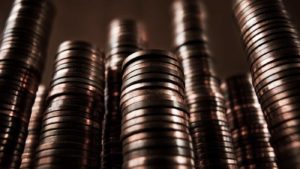My goodness — my Guinness is going green.
The Diageo-owned
DGE,
Irish brewery is launching an agricultural program to make its iconic stouts more sustainable.
It’s already tapped 40 Irish farms to join its pilot regenerative agriculture project, which involves working with the natural environment to put back more than it takes out, as explained in a press release. Soil management and crop production experts and suppliers are also on board, including Boortmalt, Glanbia and Comex McKinnon.
The initiative intends to reduce the carbon emissions of its barley production — a key ingredient in each black and white pint. And the regenerative agriculture project has five key goals, including:
- Improving soil health and its carbon sequestration potential; aka having the soil itself store carbon before it becomes carbon dioxide gas, which keeps it out of the atmosphere.
- Enhance biodiversity, or the natural soil fertilization, nutrient recycling, erosion control and crop/tree pollination that keeps the ecosystem healthy.
- Use less synthetic fertilizers, which can hurt the environment by killing beneficial bacteria in soil, or contaminating the nearby plant life and water supply that people and animals eat and drink.
- Improve water quality, which also makes for a healthier environment and healthier crops.
- Enhance farmer livelihoods, which can lead to better quality of life and boost the economy.
This program is intended to expand to more farms in Ireland and beyond. “We will openly share the results from the pilot program so that other farms can learn and adopt practices that have demonstrated the highest potential impact from an environmental and farm profitability standpoint,” said Diageo Europe president John Kennedy in a statement. “Like the Irish farming community, we are ‘all in’ for the long haul – for our people, products, partners and planet.”
He added that the Guinness brewery at St. James Gate is only 263 years into its 9,000-year lease (that’s not a typo), and the stout maker “will never settle in pursuit of a more sustainable future.”
Guinness isn’t the only beer maker looking to cut the carbon footprint of its pours. Some producers in particular are looking into packing, distribution and the carbon footprint throughout the supply chain, which tackles the toughest aspects of “green” ambitions.
Industry consultants Decarbonate estimates that almost half of the carbon footprint of beer drinking is associated with storage and service, especially at a venue like a restaurant where temperature matters.
Anheuser-Busch InBev
BUD,
— the Belgium-based brewer of Budweiser and Corona — set some ambitious sustainability goals back in 2018 for 2025. These include making 100% of its packaging from returnable or majority recycled content; purchasing 100% of its electricity from renewable resources; as well as cutting its CO2 emissions by 25% across its value chain. Electric-vehicle maker Nikola
NKLA,
partnered with Bud on a hyrdrogen-powered beer run at this year’s Super Bowl.
Read: Coca-Cola to boost use of refillable bottles in an ‘industry-leading’ move against plastic waste
Heineken
HEIA,
wants to be a carbon-neutral beer producer by 2030, and to have its entire supply chain (agriculture, packaging, distribution and cooling) carbon-neutral by 2040. The Amsterdam-based brewer is tackling its carbon footprint through reducing the carbon emissions in its breweries, drawing on renewable energy (including a wind farm in Finland, and solar-powered breweries) and supporting 500 low-carbon farming projects in eight countries.
And craft brewers like Great Lakes Brewing Company in Ohio are also turning out eco-friendly brews. The Burning River Pale Ale is named after the 1969 Cuyahoga River Fire in the polluted waterway flowing through Cleveland, which was an event that helped spark the environmental movement. And Great Lakes Brewing Company has produced almost 68,000 cases of beer using 100% solar power since installing the solar panels in 2017.
This post was originally published on Market Watch






